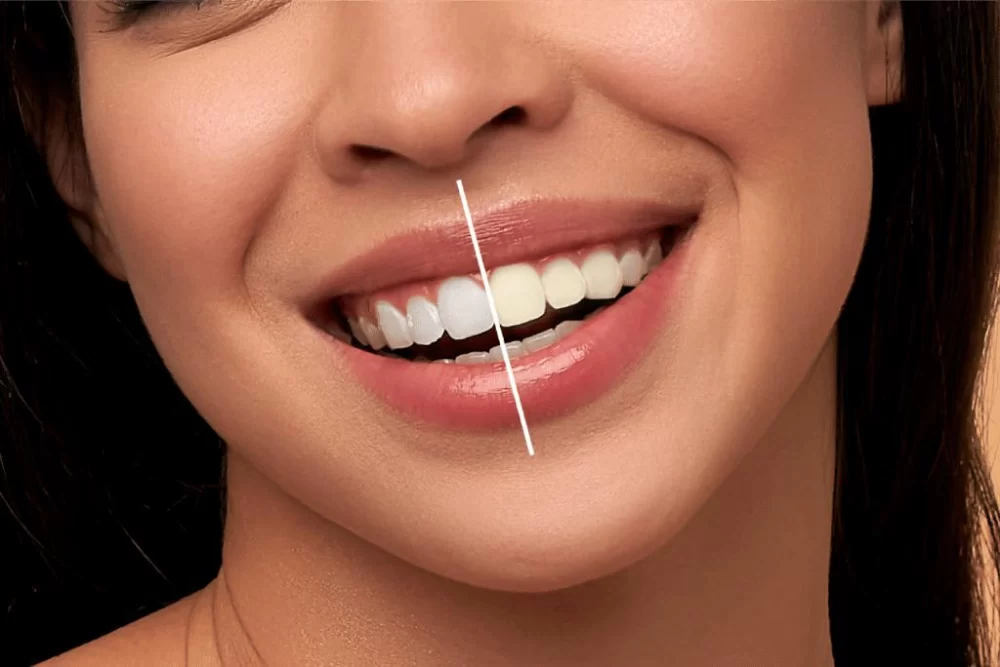
- Causes-of-Tooth-Pain-After-Whitening-Treatments
- Understanding-Tooth-Sensitivity-Post-Whitening
- Factors-Influencing-Intensity-of-Tooth-Pain
- Real-Life-Examples-and-Expert-Insights
- Managing-Tooth-Pain-After-Whitening-Treatments
- When-to-Seek-Professional-Help
1. Causes of Tooth Pain After Whitening Treatments
Tooth whitening treatments are widely popular for achieving a brighter smile, but they can sometimes lead to discomfort or pain. The primary cause of tooth pain after whitening treatments lies in the interaction between the bleaching agents—usually hydrogen peroxide or carbamide peroxide—and the tooth structure. These chemicals penetrate the enamel to reach the dentin, which can irritate the nerves inside the tooth.
One common factor is the temporary inflammation of the dental pulp, the soft tissue inside the tooth. This irritation results in heightened sensitivity or even sharp pain during or after treatment. Additionally, if the enamel is already thin or compromised, the whitening agents can exacerbate sensitivity further. This explains why some patients experience toothache after whitening while others do not.
1.1 Chemical Irritation and Its Role
The bleaching agents break down stains by releasing oxygen molecules. These molecules can seep into microscopic pores in the enamel and dentin, sometimes reaching nerve endings. This process can trigger a chemical irritation that leads to pain.
1.2 Enamel Condition and Pre-existing Issues
Individuals with enamel erosion, cavities, or exposed dentin due to gum recession are more prone to post-whitening tooth pain. The protective barrier of the tooth is weakened, allowing bleaching agents to penetrate deeper and cause discomfort.
2. Understanding Tooth Sensitivity Post Whitening
Tooth sensitivity after whitening treatments is a well-documented side effect. It can vary from mild discomfort to intense, sharp pain triggered by hot, cold, or sweet stimuli. The sensitivity typically peaks within the first 24-48 hours following the procedure and gradually subsides within a week.
This phenomenon occurs because whitening temporarily increases the permeability of enamel, allowing external stimuli easier access to the nerve-rich dentin layer. Sensitivity is a sign that the tooth is reacting to these external changes and usually resolves as the enamel re-hardens and the pulp calms down.
2.1 Temporary Nature of Whitening Sensitivity
Most tooth sensitivity after whitening is transient and manageable. However, it's essential to understand that persistent or severe pain may indicate underlying issues such as untreated decay or gum problems.
2.2 Impact of Whitening Method on Sensitivity
In-office treatments with higher peroxide concentrations often cause more pronounced sensitivity than at-home kits. Nonetheless, professional supervision ensures safety and reduces the risk of complications.
3. Factors Influencing Intensity of Tooth Pain
Several factors contribute to the severity of tooth pain after whitening treatments. These include:
3.1 Individual Pain Threshold and Tooth Anatomy
Each person's sensitivity varies based on nerve density and enamel thickness. Some people naturally have more sensitive teeth, making them more vulnerable to whitening side effects.
3.2 Duration and Frequency of Whitening Sessions
Excessive or prolonged whitening can increase the risk of tooth pain. Overuse of bleaching products beyond recommended guidelines compromises enamel integrity.
3.3 Oral Hygiene and Pre-existing Conditions
Maintaining good oral health before whitening reduces the chances of adverse effects. Patients with untreated cavities, gum disease, or cracked teeth should address these issues first.
4. Real-Life Examples and Expert Insights
Take the case of Sarah, a 28-year-old who opted for an at-home whitening kit. Within 24 hours of treatment, she experienced sharp tooth pain when drinking cold water. Upon consulting her dentist, it was found that Sarah had mild enamel erosion that made her teeth more susceptible. After adjusting her treatment plan and using desensitizing toothpaste, Sarah’s discomfort subsided in a few days.
Dr. Michael Lee, a cosmetic dentist, emphasizes, “Understanding the underlying cause of tooth pain after whitening is crucial. Not every pain indicates a problem with the whitening itself—often it reveals pre-existing dental health that needs attention.”
Such expert advice highlights the importance of personalized care when it comes to whitening treatments.
5. Managing Tooth Pain After Whitening Treatments
Dealing with tooth pain following whitening doesn’t have to be daunting. Here are some practical ways to manage discomfort effectively:
5.1 Use of Desensitizing Products
Toothpaste or gels containing potassium nitrate or fluoride can help reduce sensitivity by calming nerve activity and strengthening enamel. These products are widely recommended by dental professionals.
5.2 Limiting Exposure to Triggering Foods and Drinks
Avoid very hot, cold, acidic, or sugary substances that may provoke pain during the recovery period.
5.3 Adjusting Whitening Frequency
If sensitivity is severe, reduce the number of whitening sessions or the concentration of bleaching agents. Consulting a dental expert for tailored treatment options is advisable.
For those seeking high-quality whitening products and professional advice, Dentistry Toothtruth offers a curated selection of trusted items and services to support healthy, bright smiles with minimal discomfort.
6. When to Seek Professional Help
Persistent or worsening tooth pain after whitening treatments should never be ignored. If pain lasts beyond two weeks or is accompanied by swelling, bleeding, or intense sensitivity, consult a dentist immediately. These signs may indicate complications such as pulpitis, infection, or damage requiring intervention.
Regular dental check-ups before and after whitening sessions help ensure safety and optimal results.







 Sapphire Family Dental (Dr. Amy Chi, Dr. Emily Allen & Dr. Steven Rzepecki)4.0 (208 review)
Sapphire Family Dental (Dr. Amy Chi, Dr. Emily Allen & Dr. Steven Rzepecki)4.0 (208 review) Dr. Eric Chu4.0 (18 review)
Dr. Eric Chu4.0 (18 review) Mortenson Family Dental4.0 (451 review)
Mortenson Family Dental4.0 (451 review) Angle Orthodontics4.0 (63 review)
Angle Orthodontics4.0 (63 review) Coast Dental4.0 (257 review)
Coast Dental4.0 (257 review) Dr. Sum Li, DDS3.0 (8 review)
Dr. Sum Li, DDS3.0 (8 review) The Importance of Oral Health Education During Pregnancy for a Healthy Pregnancy
The Importance of Oral Health Education During Pregnancy for a Healthy Pregnancy Best Tips for Brushing Your Teeth Properly for Healthy Gums: Essential Techniques for Oral Health
Best Tips for Brushing Your Teeth Properly for Healthy Gums: Essential Techniques for Oral Health Why Skipping Dental Checkups Can Lead to Bigger Oral Health Problems
Why Skipping Dental Checkups Can Lead to Bigger Oral Health Problems Advantages of Porcelain Dental Restorations
Advantages of Porcelain Dental Restorations How Can Diabetes Cause Tooth and Gum Problems? Preventing and Managing Oral Health Issues
How Can Diabetes Cause Tooth and Gum Problems? Preventing and Managing Oral Health Issues Healthy Habits for Promoting Good Oral Health and Hygiene: Tips for a Healthy Smile
Healthy Habits for Promoting Good Oral Health and Hygiene: Tips for a Healthy Smile